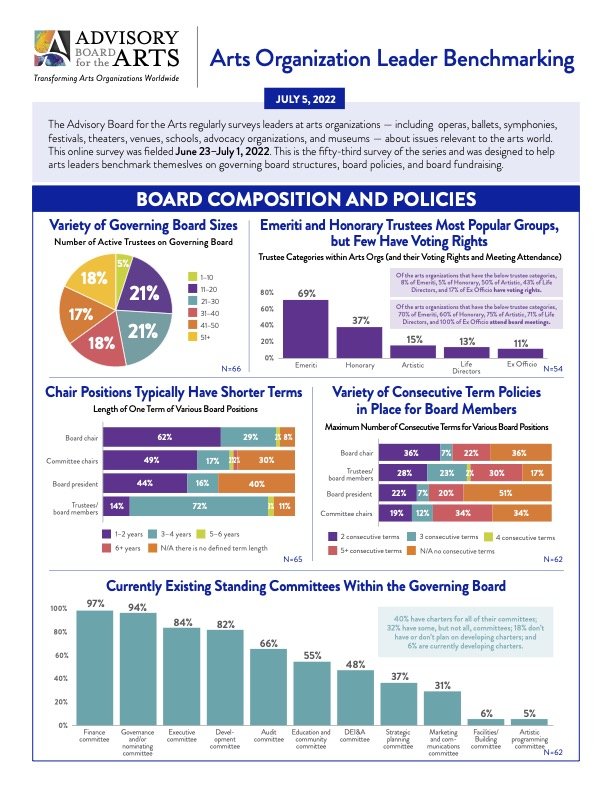Governance Practices
July 5th, 2022
As many arts organizations look to the end of their season and upcoming fiscal year budgets, questions around the structure of governance boards, its various levels of trustees and members, and fundraising objectives have come to the fore. Our latest Arts Leader Survey asked arts leaders to benchmark themselves on their governing board's term durations and reappointments, written procedures and policies, giving requirements, and existing committee types in place. Highlights from the survey include:
Emeriti and Honorary board positions are more common amongst arts governing boards, yet these positions rarely have voting rights.
Chair and president positions typically have shorter length terms than regular trustees/board members, but the committee chair and board president are also more likely to have undefined term lengths.
While the majority of arts organizations have written responsibilities for each board position, there is a smaller presence of orientations for new recruits to chair and president positions.
About three-quarters of arts organizations still require a financial contribution to be a part of the board.




